

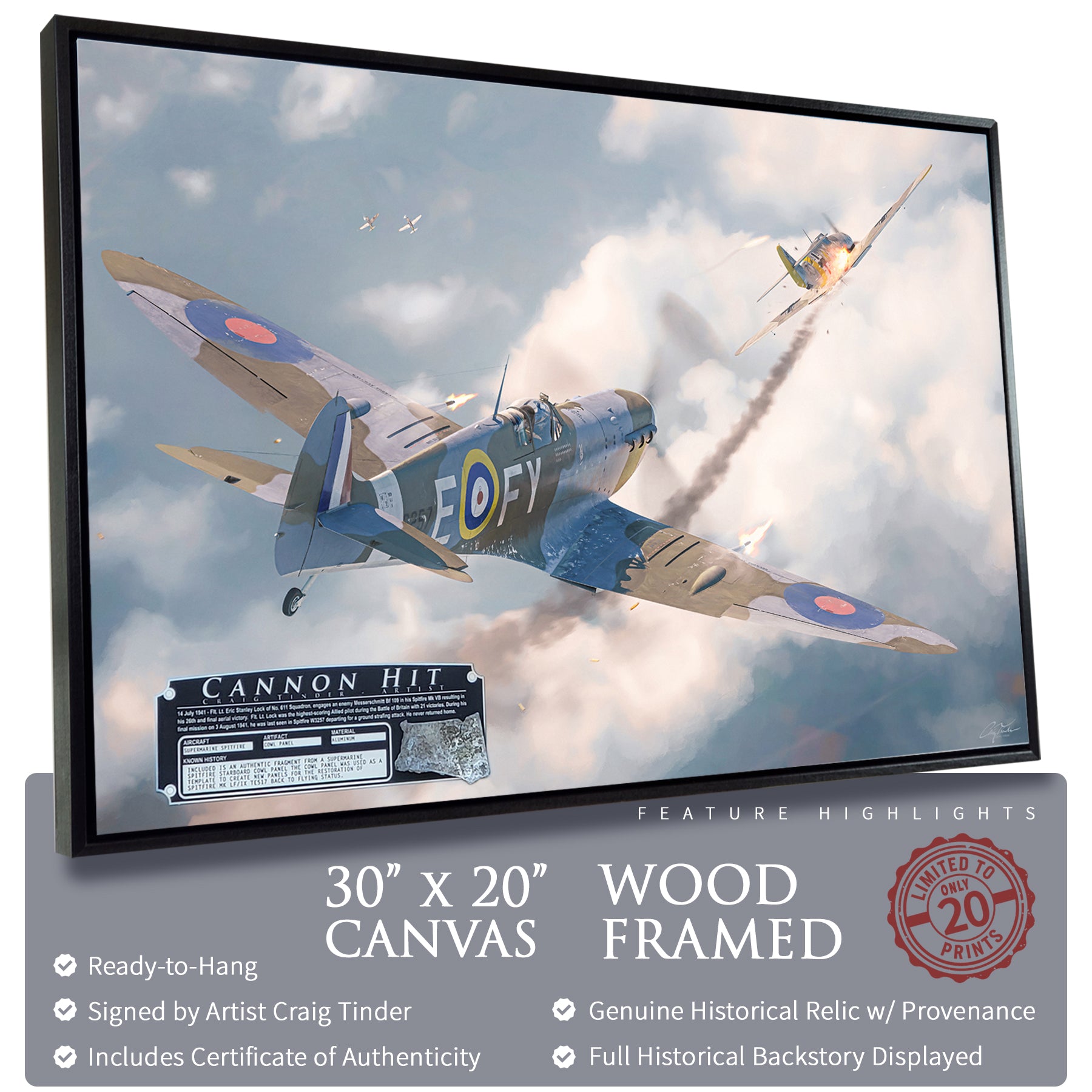
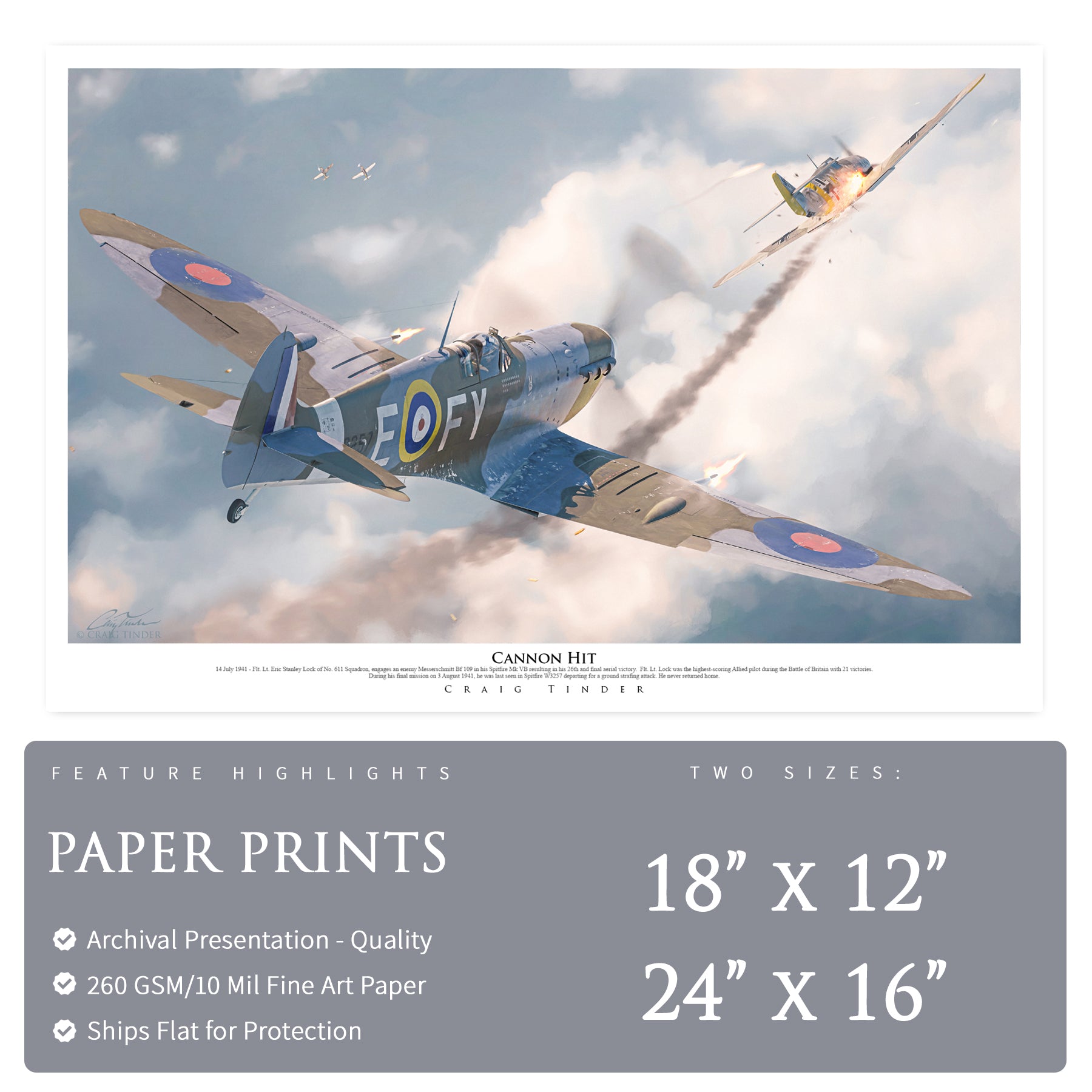

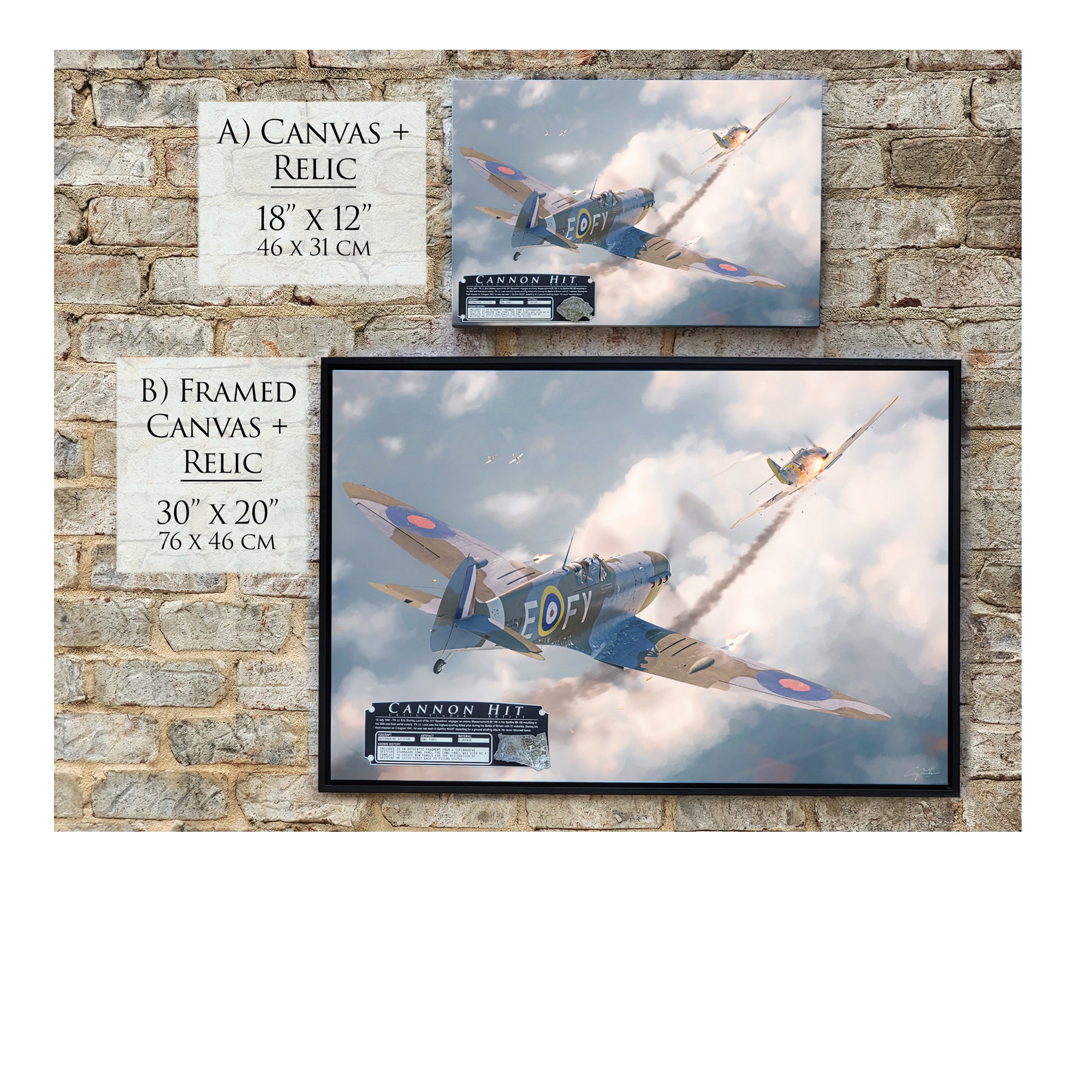
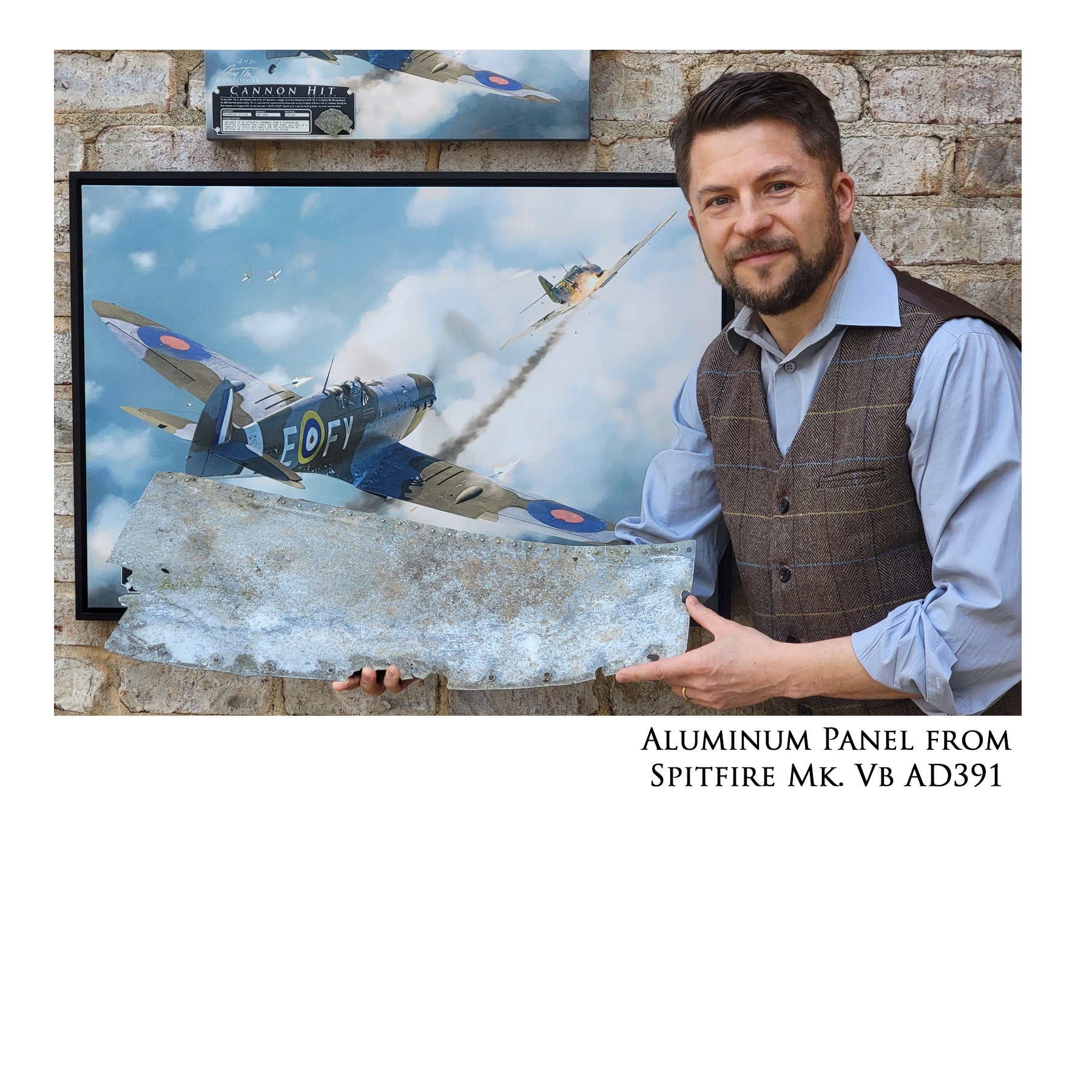
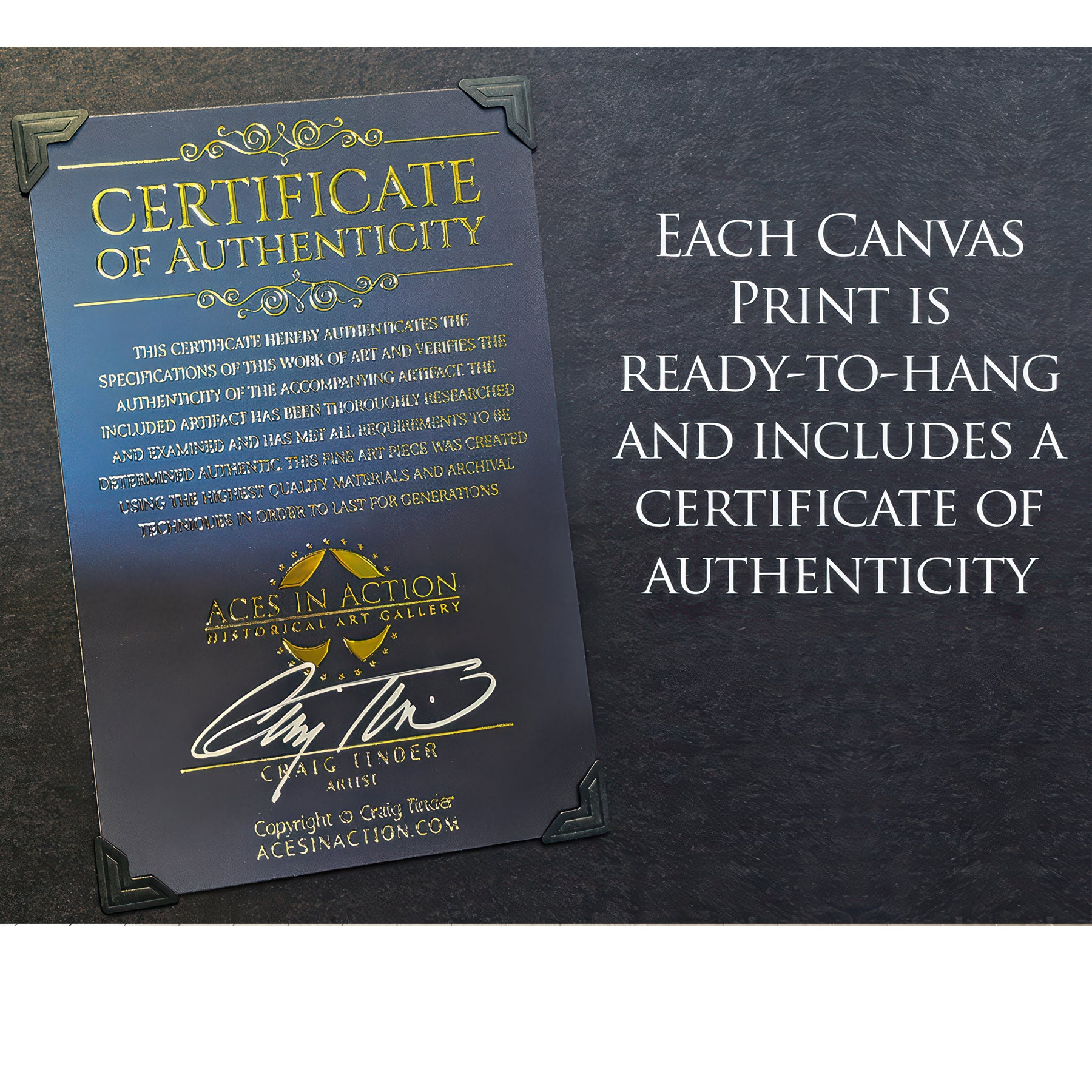
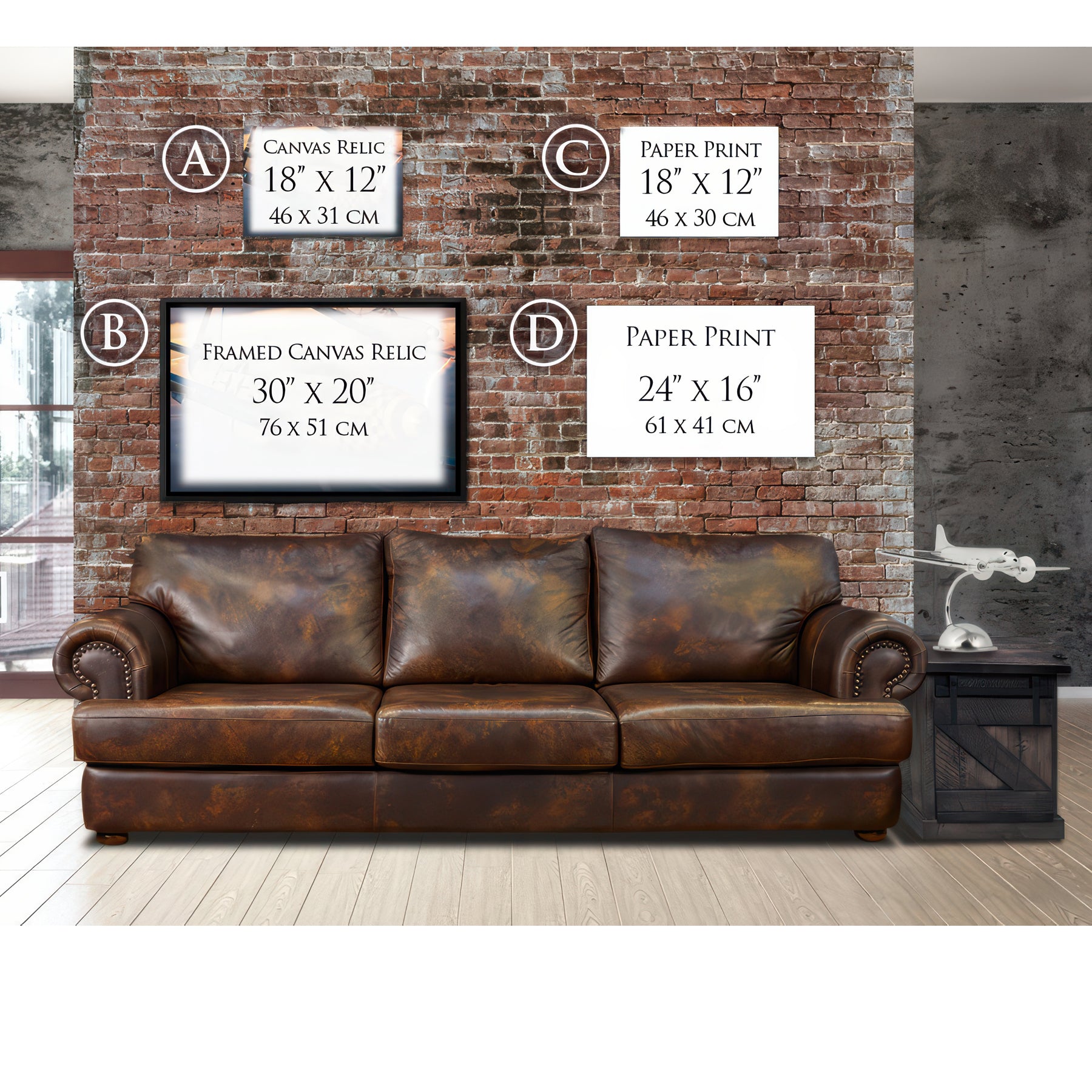
Spitfire - Cannon Hit Canvas | INCLUDES: Wing Panel Relic

Spitfire - Cannon Hit Canvas | INCLUDES: Wing Panel Relic
If you have any questions, you are always welcome to contact us. We'll get back to you as soon as possible, within 24 hours on weekdays.
Shipping Information
Use this text to answer questions in as much detail as possible for your customers.
Customer Support
Use this text to answer questions in as much detail as possible for your customers.
FAQ’s
Use this text to answer questions in as much detail as possible for your customers.
Contact Us
Use this text to answer questions in as much detail as possible for your customers.
Description
About the Relic & Process
This aluminum relic is from Supermarine Spitfire Mk.Vb, AD391, flown by 313 Squadron. On February 23, 1942, the aircraft tragically crashed into the sea near the Royal Artillery Experimental Station in Shoeburyness, Essex. Eyewitnesses reported that the starboard wing touched the water, causing the aircraft to bounce twice before plunging into the sea. The wreckage remained submerged until it was recovered in the early 1980s. Panel from Spitfire AD391 used as relic in "Cannon Hit" limited edition print
Panel from Spitfire AD391 used as relic in "Cannon Hit" limited edition print
 Outline of the above panel to denote location. Notice how the paint colors deteriorated from the saltwater, except for the red color
Outline of the above panel to denote location. Notice how the paint colors deteriorated from the saltwater, except for the red color
The authentic aluminum panel originates from the port wing, positioned between ribs 14 and 17. The large panel retains its original rivets and the paint from the national roundel markings, offering a glimpse into its wartime service. This relic, along with other Spitfire parts, was used in the restoration of Spitfire Mark LF/IX TE517, serving as a template for creating new wing panels to ensure the restoration’s authenticity. Artist, Craig Tinder, posing with "Cannon Hit" limited edition print that includes a Spitfire relic
Artist, Craig Tinder, posing with "Cannon Hit" limited edition print that includes a Spitfire relic
Recovered by The Southend Historic Aircraft Museum during the 1970s, the remains of the Spitfire were accessible during exceptionally low tides. The museum's collection included this panel along with the aircraft’s canopy, tail wheel, and various instruments. Today, these parts offer a tangible link to the history of the Spitfire and its service during World War II, preserving the legacy of one of the most iconic aircraft of the era.
Disclaimer
By purchasing from Aces In Action, you acknowledge that the product may vary slightly from the images on our website. We use authentic materials from military vehicles and relics, which may contain potentially hazardous substances. These items are not intended for ingestion, inhalation, or use by children. Aces In Action is an independent company, unaffiliated with or endorsed by any other organization. All names, logos, and trademarks are the property of their respective owners and are used for identification only, in accordance with the Lanham Act. Their use does not imply any official endorsement.
